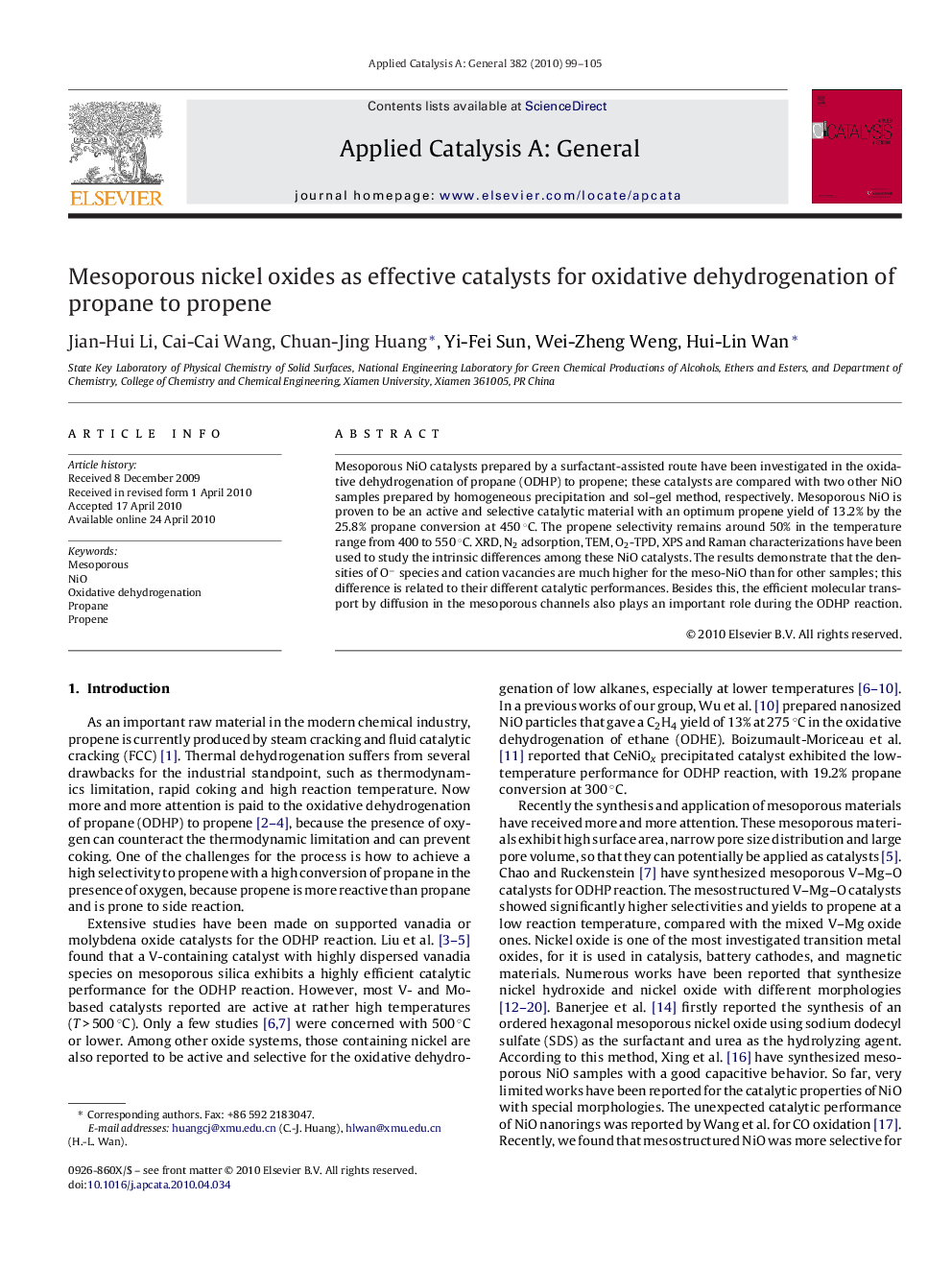| Article ID | Journal | Published Year | Pages | File Type |
|---|---|---|---|---|
| 42069 | Applied Catalysis A: General | 2010 | 7 Pages |
Mesoporous NiO catalysts prepared by a surfactant-assisted route have been investigated in the oxidative dehydrogenation of propane (ODHP) to propene; these catalysts are compared with two other NiO samples prepared by homogeneous precipitation and sol–gel method, respectively. Mesoporous NiO is proven to be an active and selective catalytic material with an optimum propene yield of 13.2% by the 25.8% propane conversion at 450 °C. The propene selectivity remains around 50% in the temperature range from 400 to 550 °C. XRD, N2 adsorption, TEM, O2-TPD, XPS and Raman characterizations have been used to study the intrinsic differences among these NiO catalysts. The results demonstrate that the densities of O− species and cation vacancies are much higher for the meso-NiO than for other samples; this difference is related to their different catalytic performances. Besides this, the efficient molecular transport by diffusion in the mesoporous channels also plays an important role during the ODHP reaction.
Graphical abstractMesoporous NiO prepared by a surfactant-assisted route has been proved to be catalytically active and selective for oxidative dehydrogenation of propane to propene. With this catalyst, an optimum propene yield of 13.2% was obtained at 450 °C. The characterization results demonstrate that the densities of O− species and cation vacancies are much higher for this meso-NiO catalyst.Figure optionsDownload full-size imageDownload high-quality image (89 K)Download as PowerPoint slide
